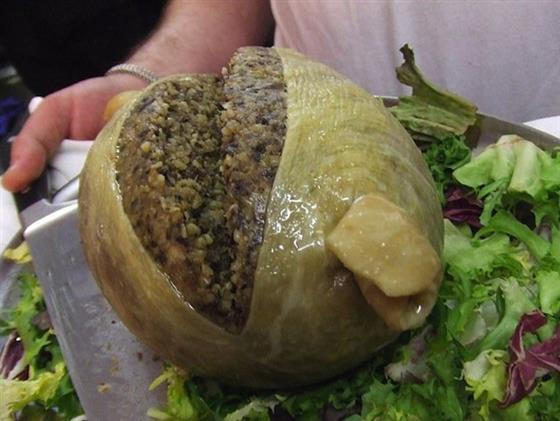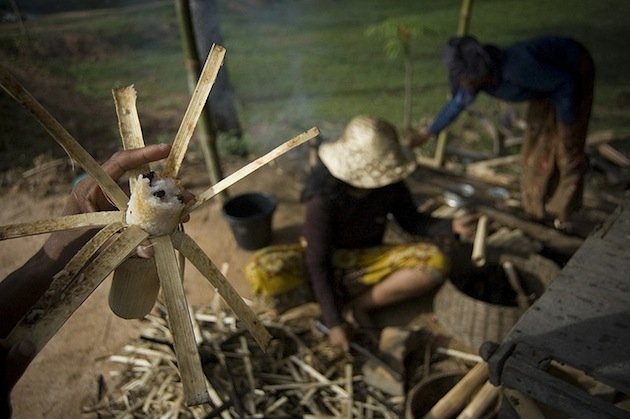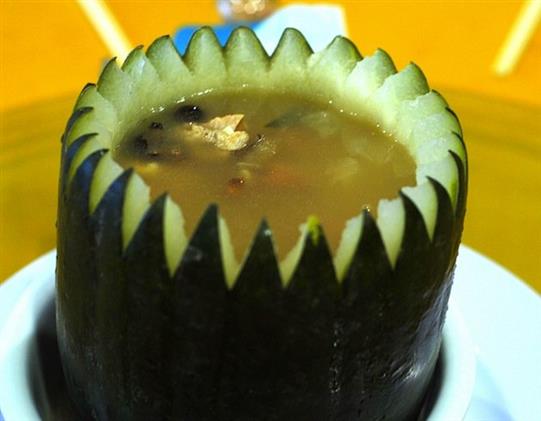
Sheep’s stomach instead of cooking pot?
By Sheere Ng - Saturday, Jun 15, 2013
The concept of cooking predates the invention of pots and pans, so the question is: What held the food during its cooking? Plonking meats into an open fire or boiling water – the two earliest cooking methods – would either overcook , burn the food or strip it off its flavour.
Fortunately, ancient people are geniuses in employing available resources, which in those days factored much of what the treasures hidden in the natural flora and fauna. Here are some of the earlier cooking vessels that are still commonly used today.
Bamboo
Food is cooked in a bamboo through steaming. Water is placed in the lower segment of the bamboo, while food is placed in the top segment separated by the plant’s “joint”. When the bamboo is placed above a fire, water evaporates and steams the food. The northern Thai living in the mountains uses similar method (without water, entire bamboo placed over open fire) to cook all sorts of dishes, and the best part is that the leftovers are biodegradable.

Winter Melon
In Chinese cooking, especially banquet dinners, winter melon serves as a casserole and is also the dish itself. The top of the melon is cut off and the seeds removed, filled with water and flavouring ingredients such as red dates and ham, and then steamed until the melon flesh is soft and one can scoop that out to serve with the soup.

Stomach
It could the stomach of sheep, cow or deer. Whatever it is, its content has to be emptied, and the stomach washed and soaked clean. A hole is made near the top where the ingredients (it could be meats and even bread dough) are inserted. The filled up stomach is then suspended over an open fire or cooked in boiling water. The Scottish has been associated with this cooking method whereby sheep’s heart, liver and lungs are mixed with spices and stock and stuffed in a stomach which is then simmered for hours to make a savoury pudding called the Haggis.



